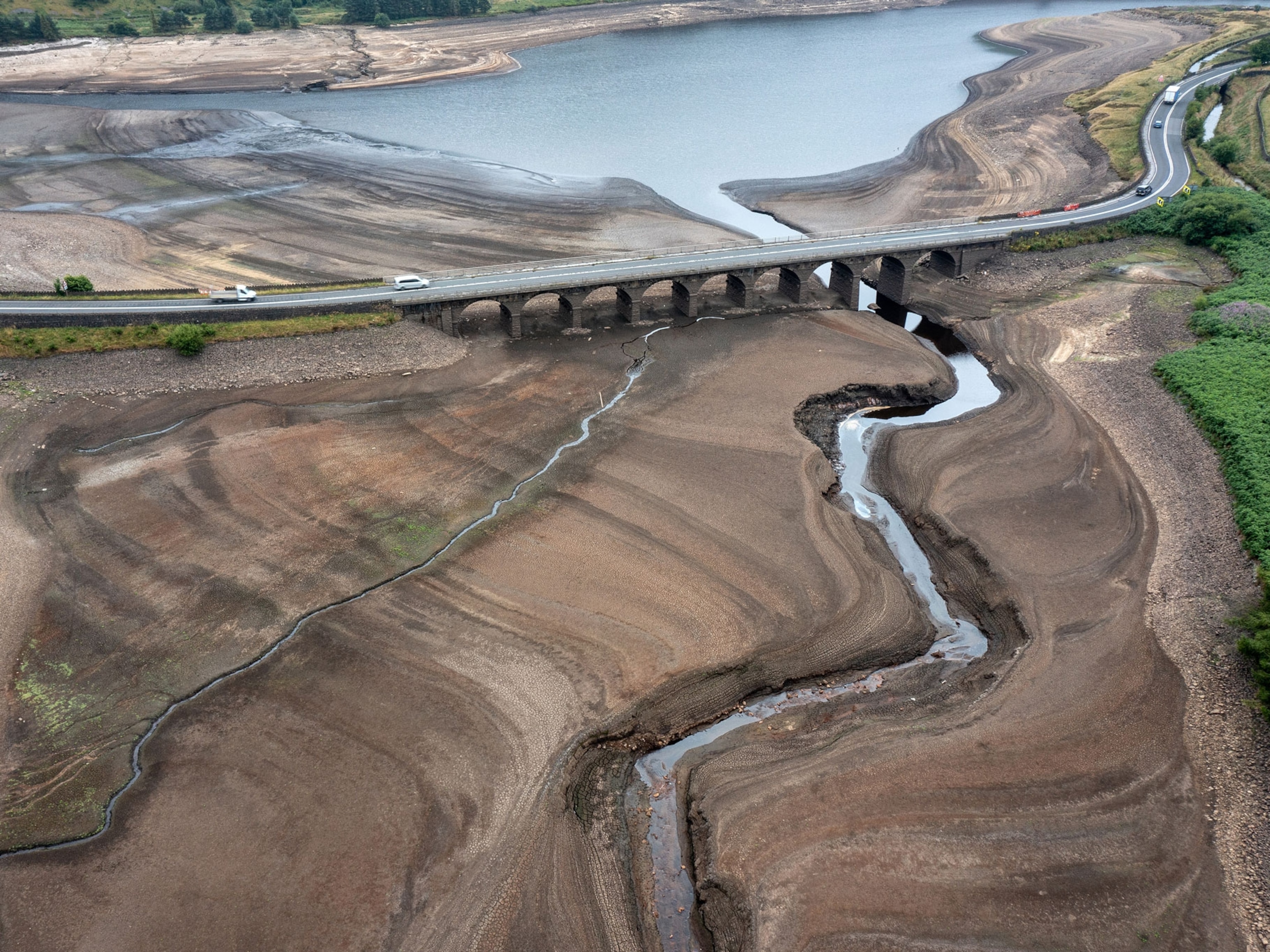
Could Seawater Solve the Freshwater Crisis?
Experts weigh in on what's holding desalination back.
This story is part of a special National Geographic News series on global water issues.
With 1.8 billion people predicted to live in areas of extreme water scarcity by 2025, desalination—the removal of salt from water—is increasingly being proposed as a solution.
But before desalination can make a real difference solving in the looming water crisis, officials and experts need to commit to overcoming obstacles that make the process expensive and inefficient, a new paper argues.
(Read National Geographic magazine's special water issue online.)
Scientists predict that by 2016, the amount of fresh water produced by desalination plants will exceed 10 billion gallons (38 million cubic meters) a year, or double the rate in 2008.
Modern desalination plants use a technology called reverse osmosis, pressing salty water through ultrathin, semipermeable plastic membranes. Unable to pass through, large molecules or ions, such as salt, are filtered out, so fresh water flows out the other side. (See diagrams of three proposed alternatives to reverse osmosis desalination.)
This method wastes much less energy than earlier desalination techniques, such as heating seawater and harvesting fresh water from the steam. But a typical reverse osmosis plant can still spend up to 40 percent of its operating costs on generating electricity to run the system—a big reason engineers are searching for ways to cut costs and make plants more efficient, starting at the membrane level.
Situation Normal: All Fouled Up?
Reverse osmosis membranes have improved since their invention in the 1960s. Today's membranes do a better job of allowing water to pass through and keeping salts out, for instance.
(Desalination plants produce more waste brine than thought)
The membranes are also more resistant to bacterial contamination, but that doesn't mean the problem of "membrane fouling" has been completely solved.
"When you operate a membrane, bacteria in the water will accumulate on the thin selective layer, making it more difficult to squeeze water through," explained Menachem Elimelech, an environmental engineer at Yale University, who co-authored the new paper.
Chlorine can be used to clear away the bacteria, but today's reverse osmosis membranes are still very sensitive to chlorine and degrade quickly when exposed to the harsh chemical.
"There should be a lot of focus to develop membranes that are chlorine resistant," Elimelech said.
Prefab Desalination Plants?
No matter how good the membranes become, however, reverse osmosis plants will need to become cheaper to build and operate if they're to meet the demands of an increasingly thirsty world, particularly in developing regions.
One way to do this is to standardize plant components and methods and to create smaller, more efficient plants, said Yoram Cohen, a chemical and biomolecular engineering professor at the University of California, Los Angeles (UCLA).
"Why are [personal computers] so cheap?" asked Cohen, who was not involved in the new review. "It's because the technology is standardized. You can buy parts from anyone and exchange them or combine them into your own design."
U.S. Falling Behind?
Another way to reduce costs and improve plants is to invest more in research, development, and education, Cohen said.
In the United States, at least, such funding is inadequate, said Cohen. He worries the U.S. could soon be outpaced in desalination research by countries such as Singapore, Israel, Australia, Spain, and the Netherlands.
Desalination, he added, should be added as a basic element of an undergraduate engineering education.
If such steps aren't taken, he warned, the U.S. will become dependent on other countries for a technology invented on its home soil.
"The first membranes for water desalination were developed here at UCLA by Sidney Loeb and Srivasa Sourirajan in the 1960s," and the pair later built the world's first operating reverse osmosis plant in 1971, Cohen said.
Salt in the Earth
Another puzzle is what to do with the salty water, or brine, created as part of the desalination process.
If a plant is close to the ocean, the brine can be safely released back into the sea if it's dissolved beforehand.
But getting rid of this concentrated solution is more problematic for inland reverse osmosis (RO) plants. "If you're away from a coastal region, it's not a simple matter," Cohen said.
"There are regulations that, in some regions, may prevent discharge of the RO concentrate back into a surface water body or into the sewer. And in certain areas, injecting that water underground may not be permitted and can be very costly."
Despite RO's promise, Yale's Elimelech is concerned that countries might see RO desalination as a silver bullet for water woes. In many cases, the best options may be slightly less sexy but also less expensive: smarter land planning and plain-old water conservation, for example.
(See "Desalination No 'Silver Bullet' in Mideast.")
“You cannot rely absolutely on desalination," he said, "if you have other alternatives."
Desalination review paper to be published August 5 in the journal Science.





